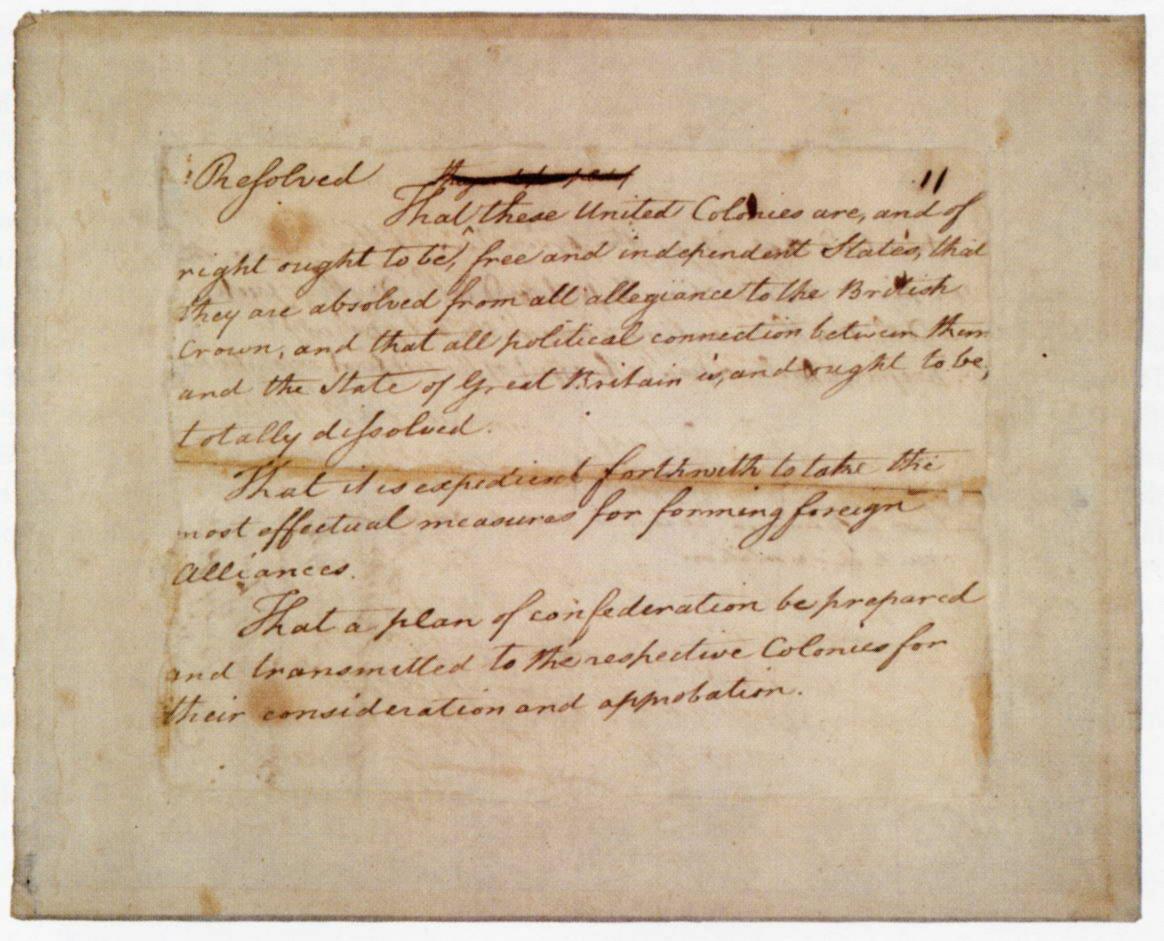Richard
Henry Lee's Resolution |

| New England was already in rebellion against the British and Thomas Paine's pamphlet "Common Sense," urging Americans to break away from the monarchy, had sold more than 100,000 copies by the spring of 1776. On June 7, 1776, in the Second Continental Congress, Richard Henry Lee, a Virginia delegate, introduced this resolution, which proposed independence/or the American colonies. The Lee Resolution contained three parts: a declaration of independence, a call to form foreign alliances, and "a plan for confederation." On June 11, the Congress appointed three committees to undertake these three tasks. They did not approve the plan for alliances until September 1776 and delayed action on the plan of confederation until November 1777. But on July 2, 1776, Congress adopted the first part of Lee's resolution, leading to the creation of the United States of America. |

| Resolved,
That these United Colonies are, and of right ought to be, free and independent States, that they are absolved from all allegiance to the British Crown, and that all political connection between them and the State of Great Britain is, and ought to be, totally dissolved. That it is expedient forthwith to take the most effectual measures for forming foreign Alliances. That a plan of confederation be prepared and transmitted to the respective Colonies for their consideration and approbation. |

